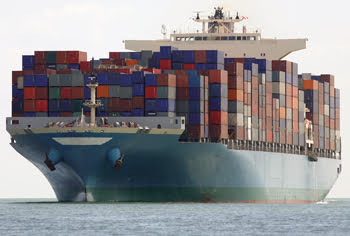
Cutting Through the Red Tape
Optics companies wrestle with global import/export issues
Negotiating the complexities of global
import and export is never easy, but for some optics companies, it has grown still
more challenging.
According to the International Traffic in Arms Regulations (ITAR),
a set of US regulations governing the import and export of items associated with
defense- and military-related technologies, information and material pertaining
to these technologies can be shared only within the US unless authorization or exemption
is received from the Department of State.
ITAR initially applied only to specific items on the United States
Munitions List – guns, tanks, etc. – but the list was expanded a decade
ago because of concerns about US technology ending up in Chinese missiles and satellites.
Today, a host of seemingly innocuous items are subject to ITAR, including a number
of optical components found in commercial satellites.
This has led to an increased bureaucratic burden for many US companies.
Some argue that it also has hindered US competitiveness.
Industry has been lobbying to change the legislation, to make
it more practical and more effective, said Alexandre Y. Fong, senior vice president
of life sciences and instrumentation at Gooch & Housego in Orlando, Fla. However,
while changes to the current system have been proposed, broad reform has yet to
pass.
As an example of the difficulties US companies might encounter,
Fong describes the case of a particular camera used for IR imaging. The camera is
manufactured in both the US and Europe, but under ITAR, it cannot leave the country,
so the US manufacturer is at a disadvantage.
 “Maybe that makes sense on some level,” he said, “but
where it gets crazy is, if you import the item from Europe to the US, it can’t
leave” – meaning it can’t be incorporated into another instrument,
for example. “However, the Europeans can send it anywhere.”
“Maybe that makes sense on some level,” he said, “but
where it gets crazy is, if you import the item from Europe to the US, it can’t
leave” – meaning it can’t be incorporated into another instrument,
for example. “However, the Europeans can send it anywhere.”
Gooch & Housego was not affected in this case, but the company
has had situations where, because it has a UK parent, it could not tell its management
what it was doing. “This makes it hard to do our job,” Fong said, “and,
arguably, with the UK being an ally, needlessly so.”
In 2007, the US signed Defense Trade Cooperation treaties with
both the UK and Australia, recognizing its special relationships with these two
countries and allowing trade of most defense-related items without a license or
other authorization. The treaties do not decontrol the items or create free-trade
areas for defense, but rather provide lists of companies and other entities permitted
end-user access to US items.
Ratification of the treaties was delayed for several years, however,
as Congress considered a variety of factors. Parties on all sides urged the government
to act more quickly. The Heritage Foundation, a conservative think tank, noted that
three British prime ministers came to the US asking for ratification – as
well as attending to other matters.
Finally, on Sept. 29 of this year, the US Senate approved the
treaties, removing at least some of the obstacles to effective trade of defense-related
items.
Overhauling the system
Only a month before the treaties were ratified, on Aug. 30, the
White House announced a broad reform of the export control system, describing the
existing system as overly complicated and redundant. The plan focuses on four areas:
what we control, how we control it, how we enforce those controls and how we manage
them.
Perhaps the most significant of the changes would involve the
control lists. Currently, the system operates under two lists, administered by two
departments. This has led to “significant ambiguity, confusion and jurisdictional
disputes,” the White House said, “delaying clear license determinations
for months and, in some cases, years.”
The plan put forth by the White House would restructure the lists
as “positive lists,” using objective criteria such as technical parameters
– rather than design intent-based criteria, for example – in seeking
to resolve the ambiguity of the current system.
Applying these criteria to the existing lists, agencies would
establish three tiers of technology: (1) items “that provide a critical military
or intelligence advantage to the United States and are available almost exclusively
from the United States, or items that are a weapon of mass destruction”; (2)
“those that provide a substantial military or intelligence advantage to the
United States and are available almost exclusively from our multilateral partners
and Allies”; and (3) “those that provide a significant military or intelligence
advantage but are available more broadly.”
Each tier will have a corresponding licensing policy, enabling
agencies to focus reviews on the most sensitive items. Currently, licensing falls
to three agencies, each applying its own policies and acting independently of the
others.

“Our largest concern as an exporter,” said Stanley Oskiera,
vice president of operations at Edmund Optics, “is we don’t want packages
disappearing, especially high-tech products.” To safeguard against this, the
company uses generic labeling as much as possible – branding packages but
not identifying the contents otherwise – and working with trusted carriers
such as UPS and FedEx, who have good track records dealing with sensitive deliveries.
“These changes could have a positive impact on the optics
industry by streamlining the process and also by loosening controls for the lowest
tiers of technology,” said Stanley Oskiera, vice president of operations at Edmund Optics in Barrington, N.J. Edmund Optics has had difficulty at times exporting
to countries such as China, he said, even when the technology was not particularly
sensitive. “Easing restrictions on items that are otherwise broadly available
will open up access to these markets, encouraging legitimate trade with economies
that are really just beginning to develop.”
Still, the question remains as to whether such broad reform of
the export control system can and will be passed. Fong would welcome the changes
proposed by the White House but isn’t holding his breath waiting for them.
“The reform looks good,” he said, “but then it’s nothing I haven’t heard before.”
/Buyers_Guide/Edmund_Optics/c4064